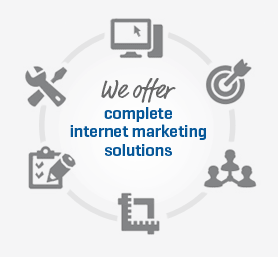How Did You Hear About Us?
A customer gives you a call, sends you an email, or walks into your store. You have a chat about what they’re looking for and how you might be able to meet their needs. At the end of this interaction, it’s common for the business owner/manager/sales rep to ask, ‘How did you hear about us?’ You advertise in a number of different ways, and you need to know what’s working and what’s not. By asking this question, you feel you’re gathering valuable information that you can use at the end of the year, or the end of the quarter to review all of your marketing initiatives and determine what to cut or what to stick with or increase. But what if they’re not telling you the truth, or the whole truth. This happens way more than you’d think, and the data that you end up collecting, more often than not, is bad data, which can result in you making bad decisions about your marketing.
So why exactly are you collecting bad data?
When most customers are asked ‘How did you hear about us?’ they don’t particularly feel like having a conversation about how they found you. Typically, they just want to give the quickest/easiest answer. “Your Website.” “Google.”
It amazes me how often clients will get this type of answer – ‘Website’ – and just leave it at that. ‘Website’ tells you nothing. It doesn’t in any way give you insight into what’s working and what’s not in terms of your marketing initiatives. Too many business owners hear ‘website’ and they translate that in their minds to mean ‘Google’, or more specifically, some type of non-branded search, meaning, someone who knows what they’re looking for but not who they’re looking for. But more often than not, ‘website’ simply means where/how they ended up contacting you, as opposed to how they discovered your business.
The more established your business is and/or the more places you advertise, the more complex or nuanced your customer’s true answer/path to discovering your business likely is.
It’s quite reasonable to expect the following type of path that a given customer may take before contacting you:
– They have a general awareness about you because they’ve seen your physical store or trucks
– At one point they saw a newspaper/magazine/billboard ad
– They heard about you from a friend
Let’s stop there for a second. These first 3 ‘touch points’ may have occurred well before the customer was actually in the market for your product or service.
– Last step, they do a (non-branded) Google search and find your website
When they thought ‘I need this product or service’, they didn’t immediately think of your business. It may have been months or years since our first 3 ‘touch points’, and they were not enough to create top-of-mind awareness. But when they did that Google search, it wasn’t the first time that they heard about you, so they clicked on your site.
In this example, the customer has 4 options to your ‘How did you hear about us?’ question. They will choose the easiest option – but none of these answers in isolation give you a complete picture.
If you’re giving someone a form or survey to fill out, you’ll typically encounter the same problem. The one problem I’ve seen over the years with forms is that the options available might not even be complete. Oftentimes when this question is being asked as part of a contact form on your website, the user is given a drop-down menu with values/options that were generated either by your web developer or as stock/standard options from a contact form plugin. So people could select something like ‘TV’ when you’ve never purchased TV advertising. Even when you take the time yourself to pick the options, they’re oftentimes vague, like ‘website’, or they don’t include all relevant options. (If you’ve read this far and you’ve searched for ‘how did you hear about us survey template’, I hope I’ve convinced you to abandon that idea.)
The one tip I give here is to at least instruct the user to ‘select all that apply’ for the reasons stated above.
The main purpose of this post is to highlight the common shortcomings of gathering this type of information so that you’re at least aware of it and don’t necessarily act on this ‘bad’ data, or maybe you’ll ask some more probing questions of your customers.
What this post omits, by design, are ways of gathering ‘good’ data using tools like Google Analytics, call tracking or various CRM (Customer Relationship Management) software.
If you’re a Google AdWords advertiser, see our post on Offline Conversion Tracking with Google Ads. Implementing this type of tracking means all of the lines of questioning discussed above are a moot point (where someone contacted you by phone or email) because we’re able to determine whether specific customers came from Google Ads.




